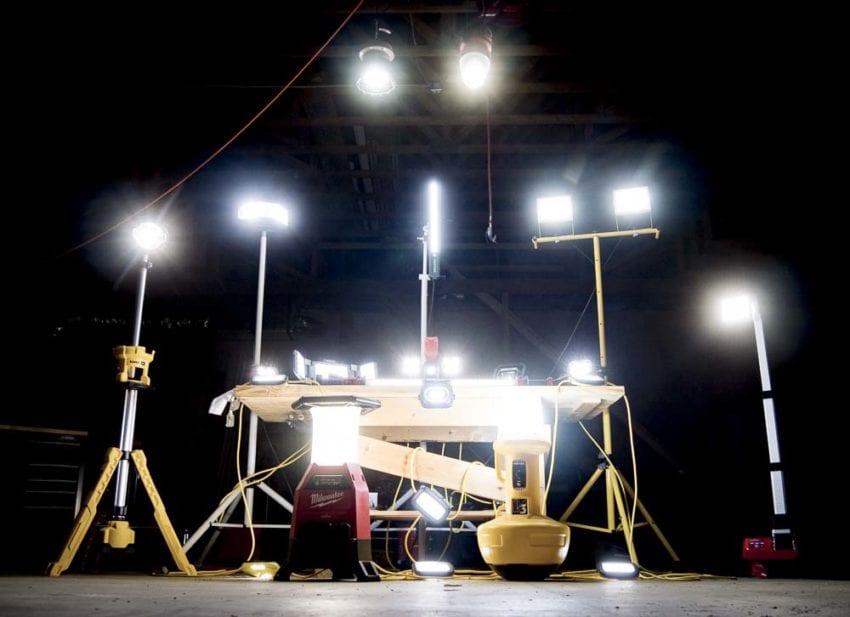LED lights are one of the hottest items for the job site right now. They run cooler, use much less power, and there are more cordless options than ever. Before you make the switch, there’s a lot to consider. Just because they’re better than halogen doesn’t mean they’re cheap. So it’s best to go in with a head full of knowledge. To help you out, we got our Pro team together to write a LED jobsite lights buying guide. This is what they look for in LED lights to use on the jobsite.
Editor’s Note: Check out our Incandescent vs LED vs Fluorescent Lighting Guide for the differences between these types of lights.
When Buying LED Jobsite Lights Ask: Do You Need Portability?
One of the first things we consider when looking for LED jobsite lights is whether we need portability. Do you need to install temporary lighting or do you need portable lighting that travels with you? The Southwire low bay and Milwaukee high bay 70W LED lights cover long-term temporary installation on major projects.
Southwire LED string lights present another temporary lighting option for smaller spaces. Many players exist in this sector, but not from the more well-known tool brands.
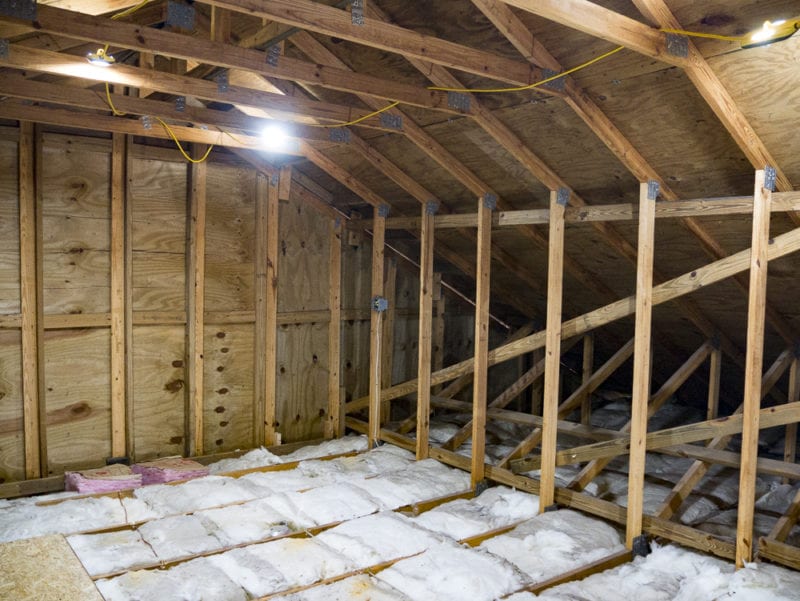
Most Pros are going to pick LED lights that travel with you every day. This protects against job site theft. It also lets you reposition the light throughout the day…or night. This keeps the light exactly where you need it.
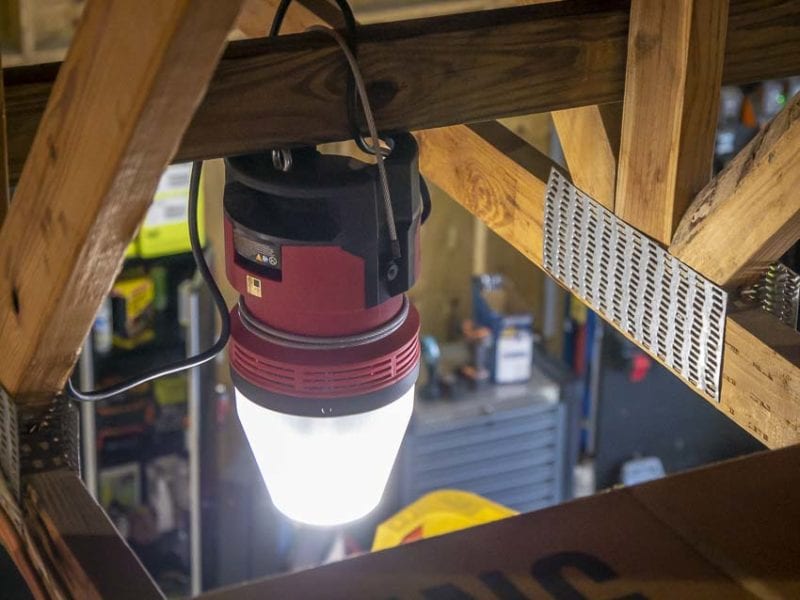
Do You Need a Cordless Jobsite Lighting Solution?
Do you need a corded or cordless LED jobsite light or lighting solution? What about both?
Cordless and hybrid power options are sexy right now, but they come with a cost. Most of the major manufacturers have at least some options, and Milwaukee goes deep in its line. If you want to go cordless, start by seeing whether your current cordless tool brand covers your needs or if you need to branch out.
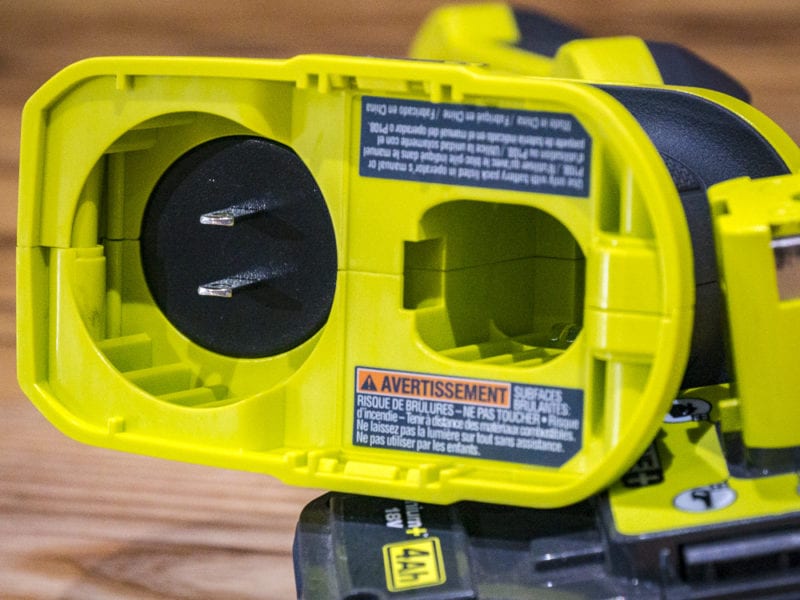
Cordless definitely brings convenience, but corded power still wins on run-time. Yes, there’s more setup time to run those cords to your best generator or outlet. On the other hand, if you need large amounts of light output all day/night long, AC power has your back.
How Much Light or Lumen Output Do You Need?
Bigger is better, right? And more lumens always beats fewer lumens…Well, maybe.
Bigger lumen numbers certainly mean more light output. If you need to light up a warehouse, you either need powerful lights or a bunch of lower output ones. How much light you really need depends on what you’re trying to replace.
Part of the equation has to do with the wattage of the light. Inconveniently, that’s a measure of how much power your old light required. Newer LED lights state their output in lumens since they require so much less power for the same output.
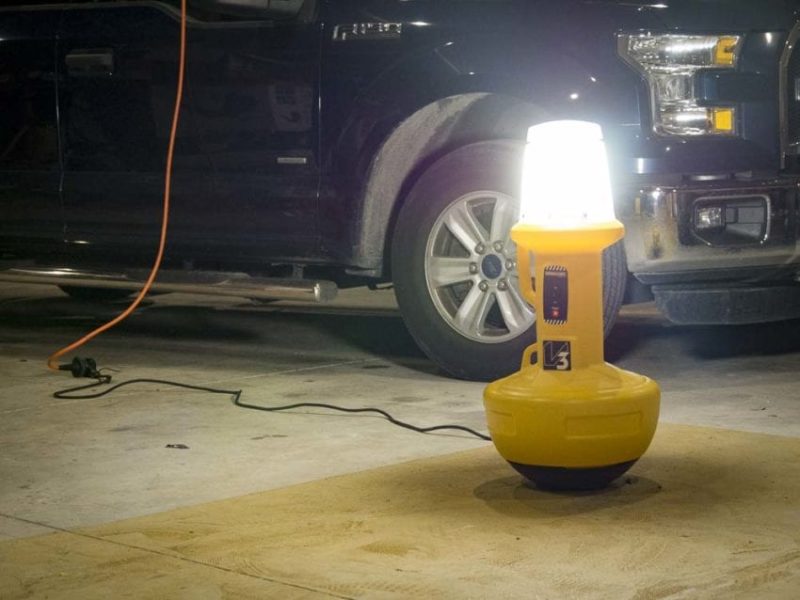
For example, a 500-watt halogen light puts out roughly 10,000 lumens. That may equate to a 120W LED lamp system.
Here’s a great resource to help you decide how many lumens you need to replace your old lights. Just punch in the watt rating of your old light and select the type from the drop-down menu. The calculator then tells you how approximately how many lumens it was producing.
You Should Care About Color Temperature
If you’re keeping up with LED lighting trends, you’ll often see labels with “5000K” or “Daylight”. Any LED jobsite lights buying guide worth its salt talks about color temperature. This approximates the color temperature with the sun directly overhead. More importantly, this describes a white without much blue or yellow coloration. For electricians, it helps ensure that you’re seeing wire colors correctly. Painters also use these lights to accurately see what paint colors will look like in natural light.
For the majority of Pros in the construction industry, the accuracy of the color isn’t a big deal. You can get your work done under 3500K as easily as 5000K. We do, however, find certain color temperatures to be more comfortable—particularly at night.
Look for something around 4000-4500K for accurate colors. If you mostly work at night, 2700-3200K lights might feel better on your eyes while illuminating the jobsite.
What the Color Temperatures on LED Jobsite Lights Mean
- 2700-3200K = Warm white (“yellow” white)
- 4000-4500K = Natural white (“true” white)
- 5000K = Direct sunlight
- 7000-7500K = Cool white (“bluish” white)
- 10000K = Old florescent lighting (“blue” white)
No matter what the color temperature of the light, you’re pretty much stuck with it. Unless you’re using something like the Ryobi Color Range Light. This hybrid power source light—now discontinued—let you shift the color from 2700K to 5000K to see how different lighting affects your results. Some newer in-ceiling LED lights also come with selectable color temperatures. Be aware that lower color temperatures reduce the overall lumen output.
Do You Need a Spotlight or Area Light? What’s the Throw?
The throw of an LED work light depends greatly on the style of light you’re working with. Area lights will have a 360° throw and floodlights will be in the 90°–180° range. For the most part, LED job site lights look exactly like the lights they’re designed to replace. Need a standard two-light stand light to replace a halogen model? It’s available and looks almost identical.
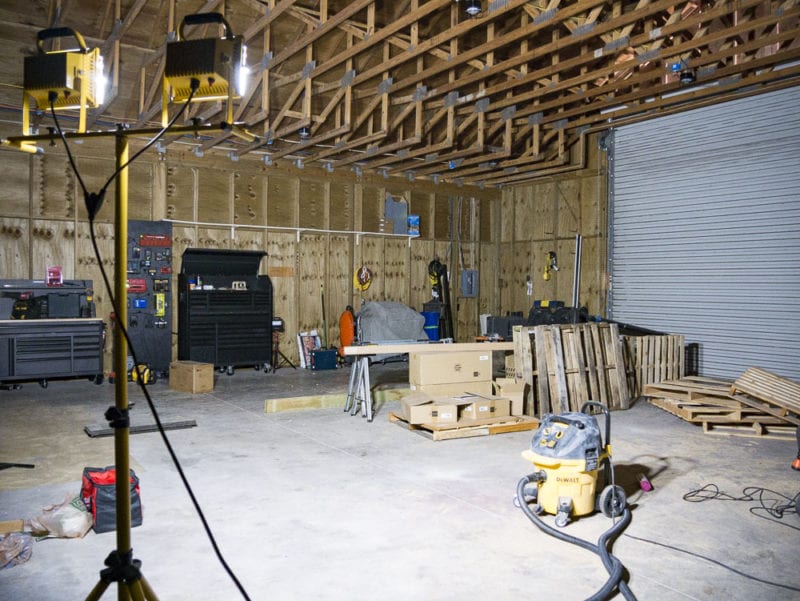
One of the differences you may notice is that some brands are working with different diffusers. Some lights have what looks like a frosted lens. These soften the light as it comes out so it’s not quite so tough on your eyes. In general, area lights are good to diffuse while lighting for a specific area should have a clear lens.
For truly large job site areas, companies like Lind Equipment make LED site lights with up to 120,000 lumens (or more) of light output. These lights can operate off a small generator and last for many hours before needing more fuel.
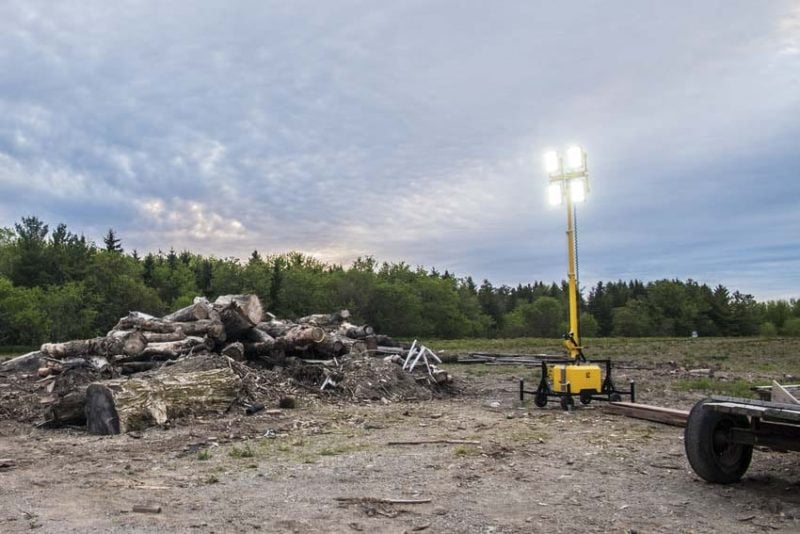
Do You Need Smart Controls on Your LED Jobsite Lights?
Some LED lights offer smart controls that you can control using your phone. You can flip them on or off without having to get to a switch or even set them on a timer so you don’t have to be onsite.
You’ll need to be within the Bluetooth range of the lights to make any changes to the settings, but it can be an awfully convenient feature to have in some cases. In particular, this helps when the location of the light is more difficult to access. The Bosch connected LED area light comes to mind as does the Milwaukee 2145 Radius Site light with One-Key.
Look for Multiple Light Intensities or Modes
Many times, you don’t need the light’s entire output for every job. Mostly found on cordless lights, you can work with a percentage of the total output to cut down on the extra light and extend your battery runtime. Believe it or not, many lights only go on or off and do not provide various levels of output or dimming.
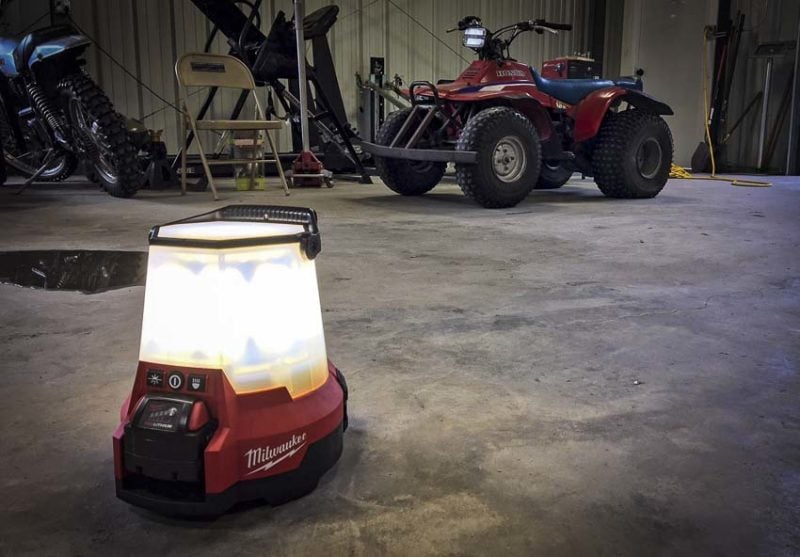
Hanging and Stand Options
Area lights pretty much stand on their own, but some LED work lights give you more options. When you need a lot of light in an area you’re working, a tripod stand is a great way to get the lights up in the air and flood the area.
Smaller LED lights can have several options. Nearly all will stand on their own and most will have a keyhole or frame design that lets you hang it from a nail. Some take it a step further with a frame that will fit on a 2 x 4. Others add magnets to the base for working around steel.
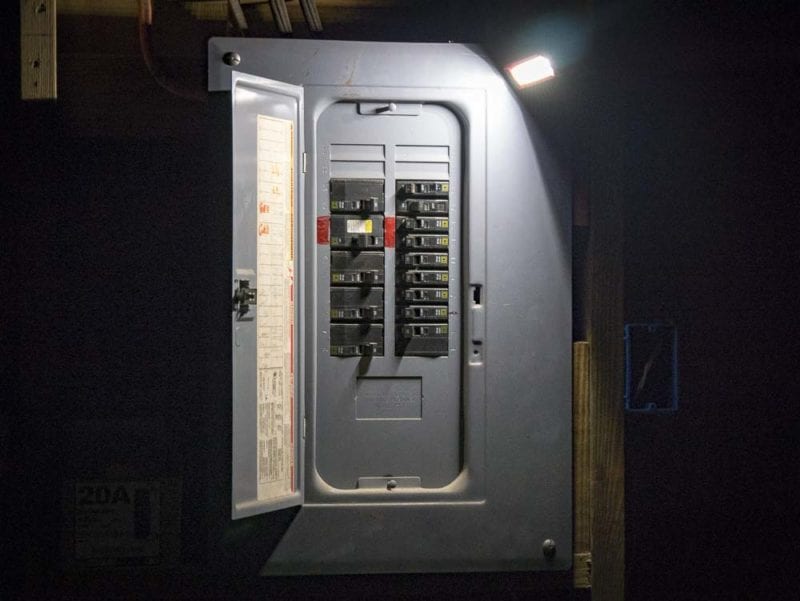
Do You Need it to Handle Water? What’s the IP Rating?
Job sites aren’t exactly known for their cleanliness. Sometimes the work has to continue in spite of the weather. If your LED light is going to spend time outside for work or security, check its IP rating and make sure it can stand up to the dust and rain that it’s likely to encounter.
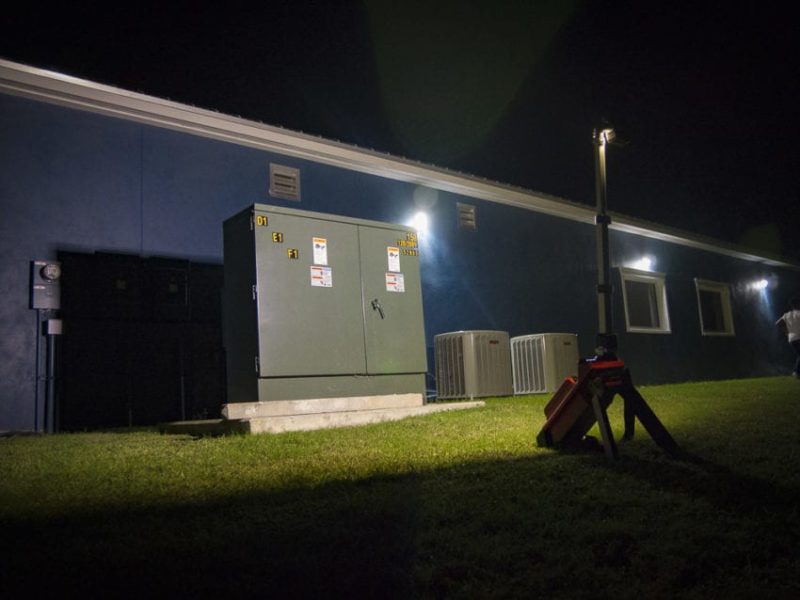
Wrapping Up the LED Jobsite Lights Buying Guide
That about wraps up this LED jobsite lights buying guide. These tips and guidelines cover just about every feature found on modern LED jobsite/work lights. Every year we see more and more, including battery-powered lights that hit more than 10,000 lumens. There’s even the Milwaukee MX FUEL Rocket Tower light that outputs over 27,000 lumens!
For additional, more specific recommendations, check out our best LED work light buying guide.

